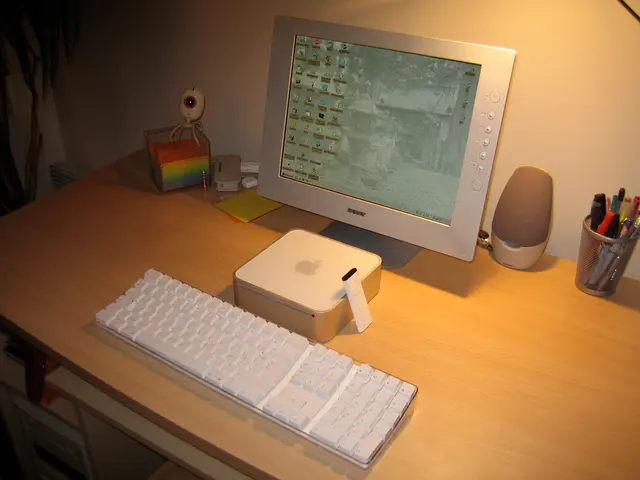Game Development Procedure Unveiled: A Detailed Explanation
What's the Dealio with Game Development?
Game development is a lengthy process, often called a pipeline. This pipeline consists of several steps, which must be completed in a specific order to ensure success. No matter the game's size, platform, or team size, game development can be split into three main phases: Pre-Production, Production, and Post-Production.
Pre-Production
Pre-production is the initial, crucial stage. The main goal is to lay a solid foundation for the rest of the development. During this phase, the team needs to answer numerous questions, such as the game's concept, target audience, market competition, and publication details. The duration of this phase varies but usually takes up around 20% of the whole development process.
In Pre-Production, the team is usually small, consisting mainly of a producer, programmers, and concept artists. The producer looks after budgeting and marketing strategies, while artists start developing the game's visual style and world-building elements. The result is the Game Design Document (GDD), a reference manual used throughout the game development journey.
The GDD covers the genre, theme, characters, core mechanics, gameplay style, world design, art sketches, marketing strategies, and monetization plans. The GDD is dynamic and evolves as the game's concept develops. Once the essential outlines are clear, the team moves on to prototyping.
Prototyping tests the game's core mechanics to ensure they are enjoyable and functional. Prototypes are basic versions of the game that focus on gameplay rather than aesthetics. A successful prototype demonstrates that the core mechanics are fun, while a failing one might require adjustments or even a pivot to a new idea.
Production
Production is the longest and most resource-intensive phase. It involves refining and expanding upon the work done in Pre-Production. This phase can take anywhere from one to four years, depending on the game's scope.
During Production, the team focuses on areas such as the prototype, First Playable, Vertical Slice, Pre-alpha, Alpha, Beta, Gold Master, and continuous testing and refinement. The team consists of roles like project managers, programmers, game designers, artists, sound engineers, and quality assurance.
First Playable is a significant milestone. It integrates the core mechanics with basic visual elements, allowing the team to evaluate how Visual and Mechanical work together. Vertical Slice creates a polished, playable segment showcasing the game's features and vision. This is used for evaluation, marketing, and pitching to potential investors or publishers.
Finally, the game reaches the Post-Production phase, where ongoing support, maintenance, and updates are needed to fix bugs and improve player experience. Additionally, teams may work on downloadable content (DLC) and other post-launch features, follow up with a post-mortem meeting to discuss the project's successes and challenges, and store elements for future use.
In a nutshell, the reliable pipeline allows development teams to produce engaging, successful games for players to enjoy.
Bonus Round:
- Concept Development: Define the game's concept, genre, and unique selling points.
- Project Planning: Create a detailed project plan, including budgeting and timelines.
- Team Assembly: Gather a team with the necessary skills and expertise.
- Storyboarding: Develop a visual representation of the game's narrative and progression.
- Asset Creation: Develop visual and audio assets like 3D models, textures, and sound effects.
- Gameplay Mechanics Development: Implement gameplay mechanics and core features.
- Storyline and Dialogue Development: Develop scenarios, quests, and character interactions.
- Testing and Iteration: Conduct regular testing to refine gameplay and fix bugs.
Understanding these game development phases is crucial for aspiring developers, whether part of a large studio or an indie team, to navigate the complexities of game development and bring their vision to life.
- During the Pre-Production phase, the team is responsible for creating the Game Design Document (GDD), which includes details about the game's concept, target audience, market competition, and monetization plans, as well as the game's genre, theme, characters, core mechanics, gameplay style, world design, art sketches, and marketing strategies.
- The game development pipeline, in essence, allows development teams to utilize technology effectively by implementing gameplay mechanics, creating visual and audio assets, refining gameplay, and fixing bugs, ultimately resulting in engaging and successful gadgets (referred to games in the text) for players to enjoy.





